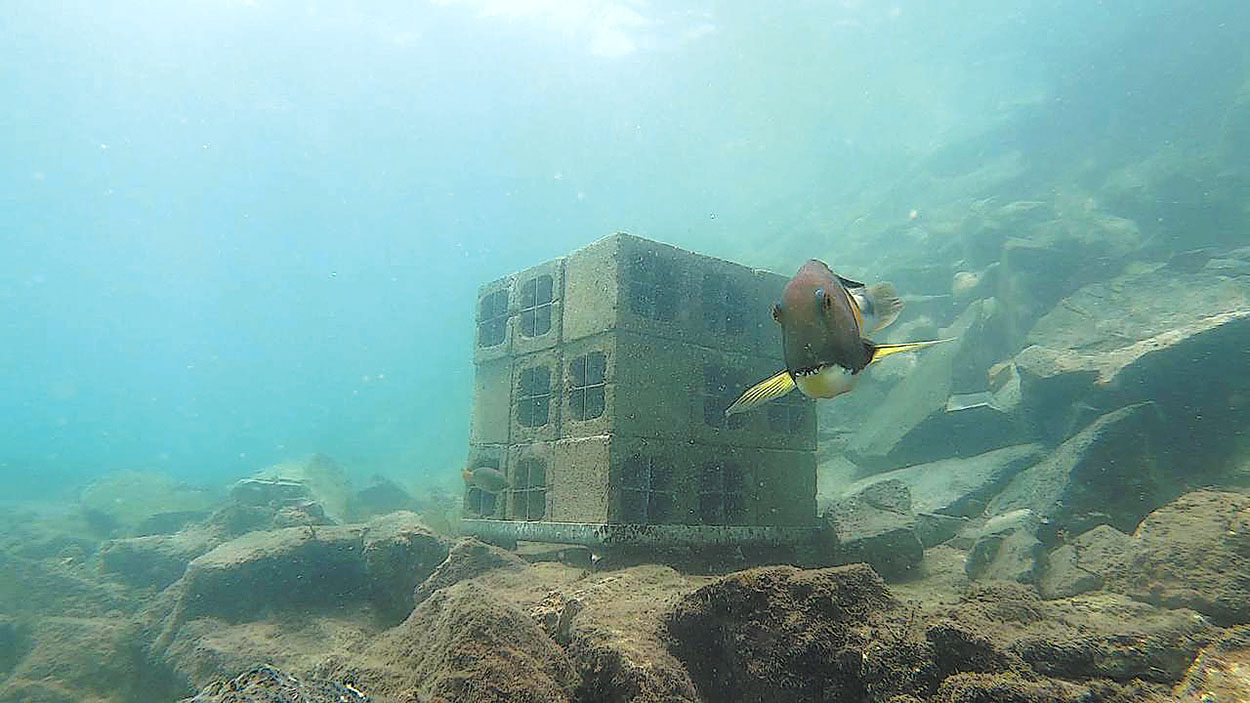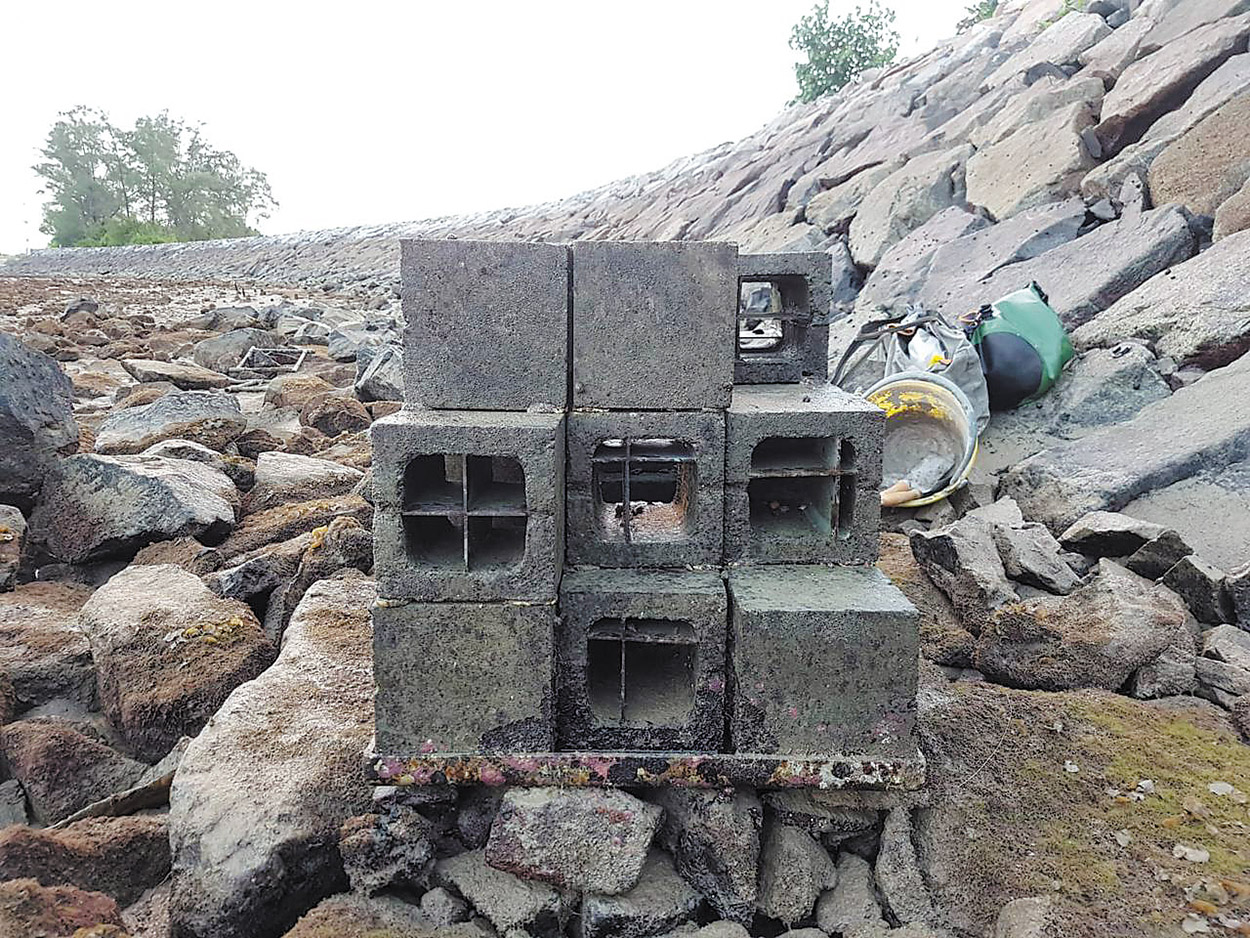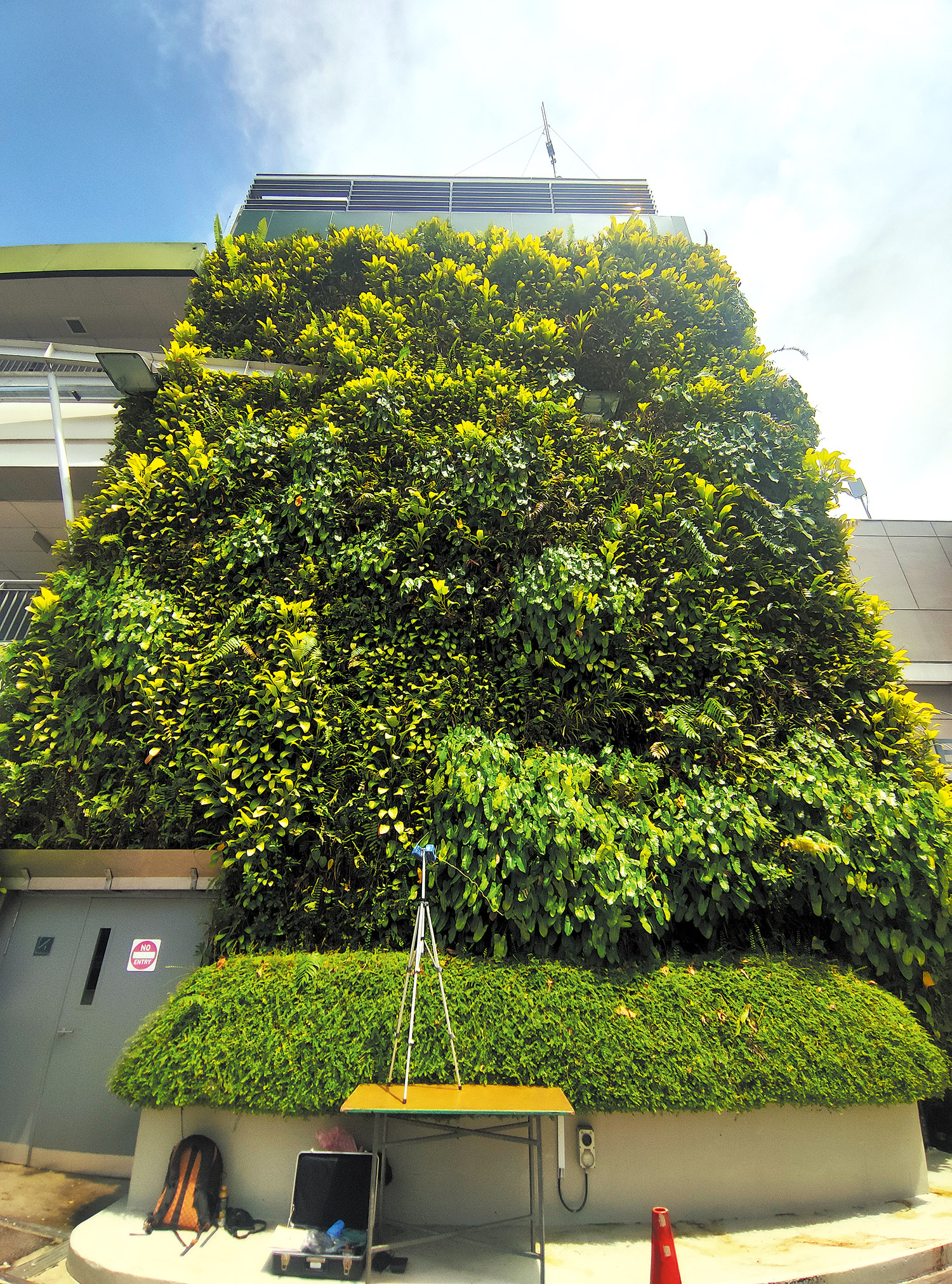Researchers look at innovative ways of undoing human damage

Editor's note: In this weekly feature China Daily gives voice to Asia and its people. The stories presented come mainly from the Asia News Network (ANN), of which China Daily is among its 20 leading titles.
Decades of development have turned Singapore from a lush island and fishing village into a thriving metropolis, but at huge cost to its nature.
Research groups are now embarking on studies to coax wildlife back to the country's urban and coastal areas, through vertical greenery or underwater structures known as fish houses that can provide a habitat for these creatures.
Such work comes amid a global push for countries to halt the rapid retreat of nature.
READ MORE: Thai scientists breed coral in labs to restore degraded reefs
Under the Kunming-Montreal Global Biodiversity Framework, a United Nations treaty that aims to stop or even reverse damage to nature, countries have pledged to restore, maintain and improve nature's contributions to people over the next six years.
Researchers' findings could not only help to make urban Singapore a habitat hospitable to both humans and animals, but also offer solutions for other areas grappling with the loss of biodiversity due to development.
Peter Todd, an associate professor at the National University of Singapore, or NUS, who conceived the study on the fish houses, said: "As coastlines around the world are increasingly modified by urbanization and the need to defend against sea level rise, it is vital that we find ways to mitigate some of the worst effects."

Condos for fish
About 70 percent of Singapore's coastline is guarded by hard structures, including sea walls, that help protect land and infrastructure from erosion caused by waves and tides.
This has resulted in the loss of fish habitats such as coral reefs and mangrove forests, said researchers in the Experimental Marine Ecology Laboratory of NUS.
A little more than five years ago, to encourage the return of fish life, the researchers deployed the fish houses, artificial structures made of concrete blocks, at the base of sea walls at five different sites at Pulau Hantu, one of Singapore's southern islands.
"Sea walls and other concrete coastal infrastructure are usually designed in a very uniform way and are structurally very simple, but marine animals need places to hide, find shelter, rest and more," said Daisuke Taira, a research fellow at the university involved in the study.
"Such gray infrastructure destroyed their habitats, so with the fish houses we are trying to do something to mitigate the impacts for the fish to come back and utilize these habitats."
In a coral reef, for example, hard corals and their different growth forms — some have branches, others look like plates, while others grow massively — provide a highly complex environment that can support fish, sea slugs, crustaceans and many other creatures.
Mangrove forests also have tangled webs of roots that provide little pockets of space for fish to rest or hide in.
However, degraded habitats and human-made coastal defenses typically lack the variety of features found in natural shores, and creating microhabitats is important in improving biodiversity, the researchers said.
To investigate what types of artificial structures are most effective in attracting the return of fish life, the research team tested three different fish house designs of varying complexity, in terms of their shapes and the size of holes within each block.
The most simple fish house design involved 27 concrete blocks stacked up in the shape of a cube, and had 100 holes, each 6.25 centimeters by 6.25 centimeters.
The more complex design was still cube-shaped, but had 100 holes of 25 different dimensions.
The most complex freestyle design was non-cuboid in nature, with the concrete blocks stacked in different shapes. It had holes of different dimensions and other habitat features to mimic little tunnels or crevices in a coral reef or rock.
The study co-author Rachel Mark said the aim was to find out what types of spaces fishes need, so the blocks can be deployed to the sea wall area to attract fish diversity.
The researchers found that the two cube-shaped fish house designs attracted about 27 fish species, while the most complex freestyle fish house design drew in more species of fishes, and in greater numbers.
The study also showed that fish use the houses for different reasons by day and by night.
During the day they typically enter the fish houses to find food and sometimes rest or ambush other fish. The time spent in the houses is also short, about a few seconds to 30 minutes, and they prefer spaces larger than them as they search for food.
At night they primarily use them for resting, which largely explains why they spend a longer time in them and in smaller spaces with less visual exposure where they can snugly fit their body to avoid predators.
Taira and Mark said the findings show that the effectiveness of fish houses depends on their design.
"This study provides more technical information on how fish houses deployed near sea walls can be designed to support higher fish diversity, which can be incorporated into future coastal defense construction," Taira said.

Green walls
On land, too, researchers are finding ways to improve biodiversity by using human-made vertical greenery systems in which vegetation is incorporated into vertical surfaces such as walls.
Such green walls could help mitigate rising temperatures and loss of biodiversity, which are the results of climate change and urbanization, said a report published in the international journal Building and Environment in November.
The study was a collaboration between Utrecht University in the Netherlands, Nanyang Technological University in Singapore and Bio-SEA, a company in Singapore that specializes in ecological design.
The temperature regulation of green walls has been studied before, but the biodiversity benefits these walls deliver are not well researched, especially in tropical climates, said Katharina Hecht of Utrecht University, the lead researcher.
The study compares the green walls with their natural counterparts such as natural cliffs, which Hecht said is a novel approach to evaluate whether building walls perform to their full potential in providing ecosystem services.
A total of eight green walls on buildings, four climber and four foliage, as well as four natural cliffs and eight non-vegetated building walls, were studied between August 2022 and March 2023.
ALSO READ: Staying afloat
A total of 280 animal species were recorded across all 20 walls — foliage walls, climber walls and walls with no vegetation. Of these, natural cliffs hosted the most number of species, with 115 recorded, including the Asian hermit spider. Foliage green walls hosted 111, such as the yellow-vented bulbul, while climber green walls hosted 77 species, such as the pond wolf spider. Walls without any vegetation had only about 20 to 39 species.
The researchers also found that animal diversity increases when there is more surrounding vegetation, such as trees within 10 meters of a wall, which can act as stepping stones for creatures to move from other nearby green spaces to the walls.
The research also supported the findings of earlier studies that showed that green walls can act as temperature buffers for the building during the day and at night. They can help to cool the building in the day while providing insulation from cooler temperatures at night.
Green walls can help lower the temperature around the building wall by an average of 0.6 C to 0.7 C, the study showed.
On the implications of the study, Anuj Jain, director and principal ecologist at BioSEA and the study's senior author, said he hopes the collection of such data can be useful for decision-makers, such as building developers, to make more informed decisions in the built environment.
This can help to ensure regenerative, meaning having more nature than its original state, and multifunctional building designs that are hospitable to wildlife.
On green walls, Jain said: "Green walls cannot replace a natural cliff, they cannot replace a forest, but they are attracting a decent diversity of animals, particularly insects, where the details depend on the configuration and the complexity of the wall itself.
"That itself is already a very good starting point to incorporating biodiversity in urban environments."


